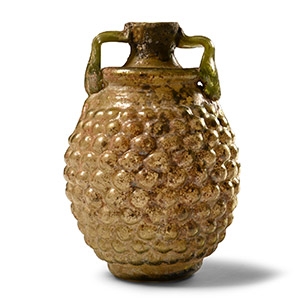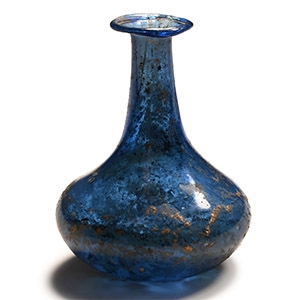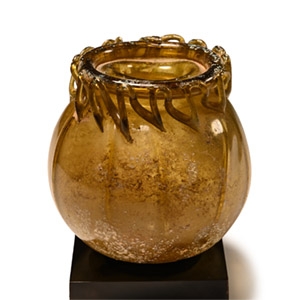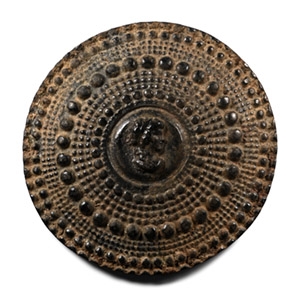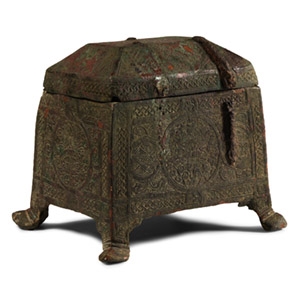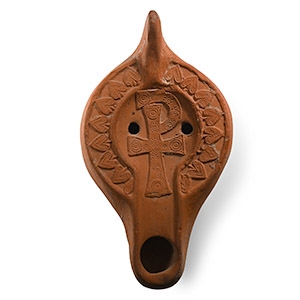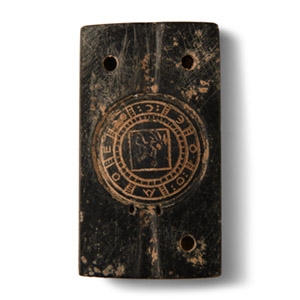Home > Auctions > 3 - 8 September 2024
Ancient Art, Antiquities, Natural History & Coins
Auction Highlights:
From an English private collection, 1970s-late 1990s.
English private collection.
Accompanied by an academic report by Dr Raffaele D’Amato.
This lot has been checked against the Interpol Database of stolen works of art and is accompanied by search certificate number no.12163-218598
Cf. Bonanno, A., Roman relief portraiture to Septimius Severus, Oxford, 1976, pls.294-295, 306, for similar portrait relief in style, from the Arch of Severus at Leptis Magna.
The style is akin to the sculptures of the Severan Age with a naturalistic treatment of the hair, and a more restrained use of the drill. The sculpture displays the same characteristic oval broad face with fleshy round cheeks, widely arched brow and big eyes of the portraits of Julia Domna. The alternative identification of the head as an Amazon can be deduced from the taenia and the details of the tear ducts, linked to a possible representation of a combat scene in which an Amazon suffers in agony after receiving mortal wounds.
Acquired on the European art market, 1990s.
English private collection.
From a London collection of erotica, formerly in the collection of the late Mr S.M., London, UK.
Cf. Bémont, C., Lampes en Terre Cuite, Paris, 2007, item D.179, for type.
Collection of Stanley J. Seeger (1930-2011), England, Tennant of Yorkshire.
with Attic Sale, 16 May 2015, no.265.
Acquired by the present owner at the above sale.
Cf. similar, less elaborate beaker in the British Museum under accession no.1869,0624.26.
German art market.
Acquired by the present owner from the above in 2003.
See Whitehouse, D., Roman Glass in the Corning Museum of Glass, vol.2, New York, 2001, item 631, for type.
From the private collection of a French Count in the 19th century.
Ex Thierry de Maigret, April 2010.
Cf. Whitehouse, D., Roman Glass in the Corning Museum of Glass, vol.2, New York, 2001, item 631, for type.
The neck has the appearance of having been reduced in height and ground off flat at the rim, while the applied handles are an unusual feature on this type of vessel. The examples in the Corning Museum have a much taller neck and flared rim to the mouth.
UK private collection before 2000.
Acquired on the UK art market.
Property of a London gentleman.
Cf. Lightfoot, C.S., Ancient Glass in National Museums Scotland, Edinburgh, 2007, item 368, for type.
From the glass collection of a London gentleman, UK, 1990s.
Cf. The Metropolitan Museum, accession number 74.51.197, for similar.
Acquired in the mid 1980s-1990s.
Private collection, Switzerland, thence by descent.
Private collection, since the late 1990s.
Cf. similar less ornate example in the British Museum under accession no.1854,0717.23.
UK private collection before 2000.
Acquired on the UK art market.
Property of a London gentleman.
Marceaux Collection, France.
Private collection Mr. D, France, before 2000.
Cf. Rosenthal, R. & Sivan, R., Ancient Lamps in the Schloessinger Collection, 1981, items 491-495, for type.
UK private collection before 2000.
Acquired on the UK art market.
Property of a London gentleman.
Cf. Adam-Veleni, P., Mylopoulos, Y., The Metro-nome of Thessaloniki’s History, Thessaloniki, 2018, p.167, for similar moulds.
Plates from mid-period jewellery moulds (10th-12th centuries) with the imprint of the jewellery to be made carved into one or both of the surfaces (earrings, buckles, clasps, beads of necklaces, etc.) were usually made of graphite schist, or other rocks. The plates were bound together in twos or threes by lead pins and the liquid metal was injected via conical openings. Similar tools were found in the 10th-12th levels of Thessaloniki.
85 - 96 of 3369 LOTS

.jpg)

.jpg)
.jpg)
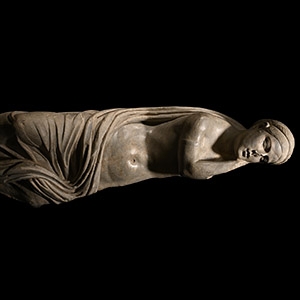
.jpg)
.jpg)

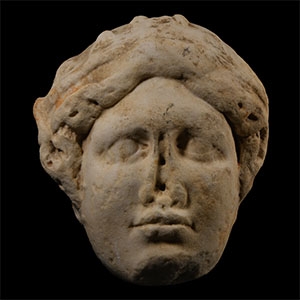

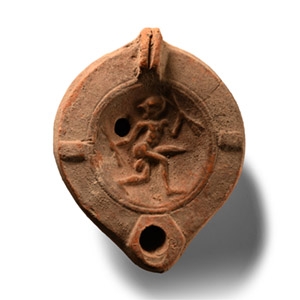
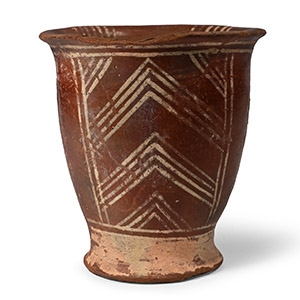
.jpg)
